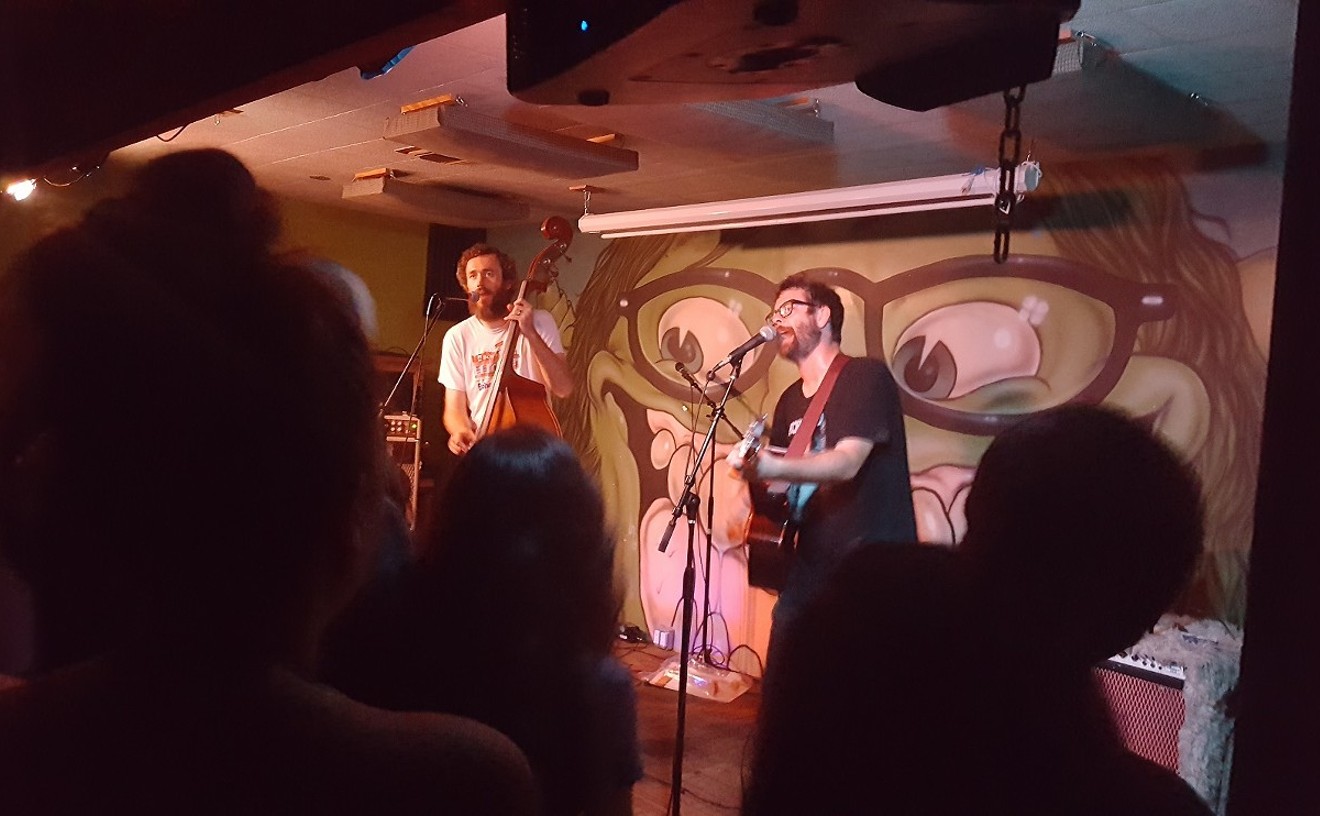Welcome back to Explicitly Graphic, a monthly column by Cynthia Clark Harvey (who's working on a graphic novel of her own). From time to time, Harvey will review graphic novels, talk to artists, and dive into the scene of all things explicitly graphic. Today, she unwraps Calling Dr. Laura by Nicole Georges.
Nicole Georges' new graphic memoir, Calling Dr. Laura (Mariner) is a 260-page sleight of hand. The cover promises ("In the tradition of Fun Home . . .") a family mystery to unravel.
The topic is raised early, as a palm reading arranged by a girlfriend takes an interesting twist. The palmist insists that the father Georges has been told is dead remains very much alive. Georges' inquiry into the vitality of her father takes up only a little bit of the real estate between the covers of this book, but that's fine. If that's the hook it took to sell the book, I'm glad of it, because it's a charming volume, full of lovely drawings and a nice exploration of the rest of Georges' life as a chicken and dog keeper, femme zinester, artist, DJ, and musician living in Portland.
See also: - Ellen Forney Talks Mental Health, the Life of a "Crazy Artist," and Her latest Graphic Novel, Marbles - A Soldier's Daughter's Heart: A Conversation with Graphic Novelist Carol Tyler
Anyone who likes animals will be taken with the multitude of panels featuring one, two, or several dogs and/or chickens. In fact, this book gave me a first, in that I mourned, along with Georges, upon the death of Mabel.
I've never grieved for a chicken before, but this was one I'd come to know personally through Georges' loving drawings. Perhaps this is how late-life vegetarians come to be. Georges does a sweet artistic trick in making all the art in scenes of her childhood simple and unadorned, much as a really talented 10-year-old might draw. This helps make some of the bitter contents of a messy and often frightening home life both easier to look at and harder to contemplate.
Because Georges' father is quite literally absent from all her life and most of this book, this was a story more about the relationship between Georges and her mother. The mother/daughter relationship isn't one that can be parsed by checking public records and the one that remains the real family mystery. The resolution of the question about Georges' father comes in an epilogue that is sad and ultimately frustrating in its brevity. I believe that Nicole Georges could (should?) have a lot more to say about this father, this family.
Georges has a unique visual style and voice, and I look forward to reading her next book, whatever the subject. But I have to hope that someday we get the story that we were sold in Calling Dr. Laura.
Follow Jackalope Ranch on Facebook and Twitter and Pinterest.











